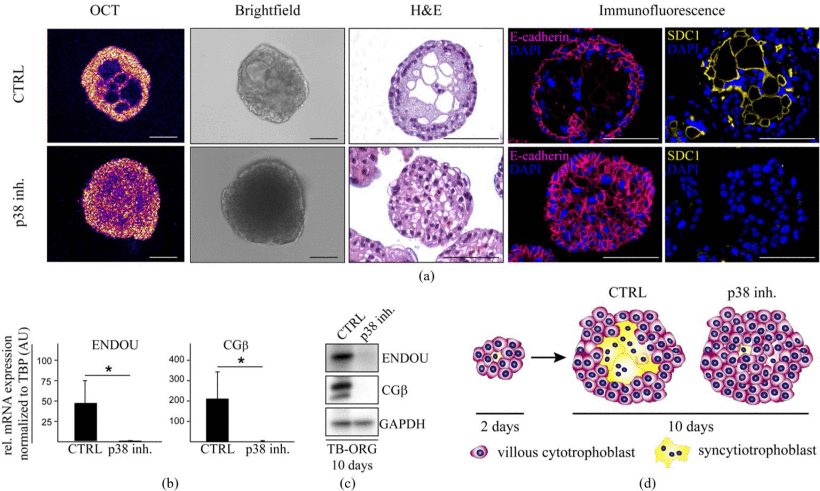VIRAL - Viral Infectiology Research with Advanced Laboratory models)
The VIRAL project is a groundbreaking initiative aimed at advancing our understanding of viral infections through the development of innovative ex vivo models.

Picture used from A. J. Deloria et al., 'Ultra-High-Resolution 3D Optical Coherence Tomography Reveals Inner Structures of Human Placenta-Derived Trophoblast Organoids,' in IEEE Transactions on Biomedical Engineering, published under CC BY 4.0 license
This collaborative effort brings together leading experts and cutting-edge technologies to fill critical gaps in current research methodologies, particularly those offered by ERINHA (the European Research Infrastructure on Highly Pathogenic Agents), which studies pathogens posing significant threats to human and animal health. One of the pivotal contributors to this effort is the Medical University of Vienna, which leverages its advanced imaging techniques to provide unparalleled insights into viral pathogenesis.
Biophotonics Group Expansion into infectiology and immunology
As part of the VIRAL project and other collaborative efforts, the Biophotonics group at the Medical University of Vienna is set to embark on an exciting new journey into the fields of infectiology and immunology. This strategic expansion is directly aligned with the objectives of the project, which focuses on developing novel models and imaging techniques to study viral infections and host responses.
Leveraging Advanced Imaging Techniques
The Medical University of Vienna will employ High-Resolution Episcopic Microscopy (HREM) and Optical Coherence Microscopy (OCM) to visualize and analyze complex three-dimensional structures within organoid models. These advanced imaging techniques will be instrumental in providing detailed structural and morphometric analyses, enabling researchers to observe the intricate interactions between viruses and host tissues.
Impact on Infectiology and Immunology
By integrating state-of-the-art imaging technologies with innovative ex vivo models, the Biophotonics group will be at the forefront of discovering new insights into viral behavior and immune responses. This expansion will not only bolster the group's research portfolio but also position it as a key player in the fight against infectious diseases.
Funding

This project has received funding from the European Union’s Horizon Europe research and innovation programme under grant agreement No 101046133 (ISIDORe). It is an initiative supported by various European research infrastructures, aiming to enhance the collaborative efforts in the field of viral infectiology.
Contact
Richard Haindl
T +43 (0)1 40400-17150

